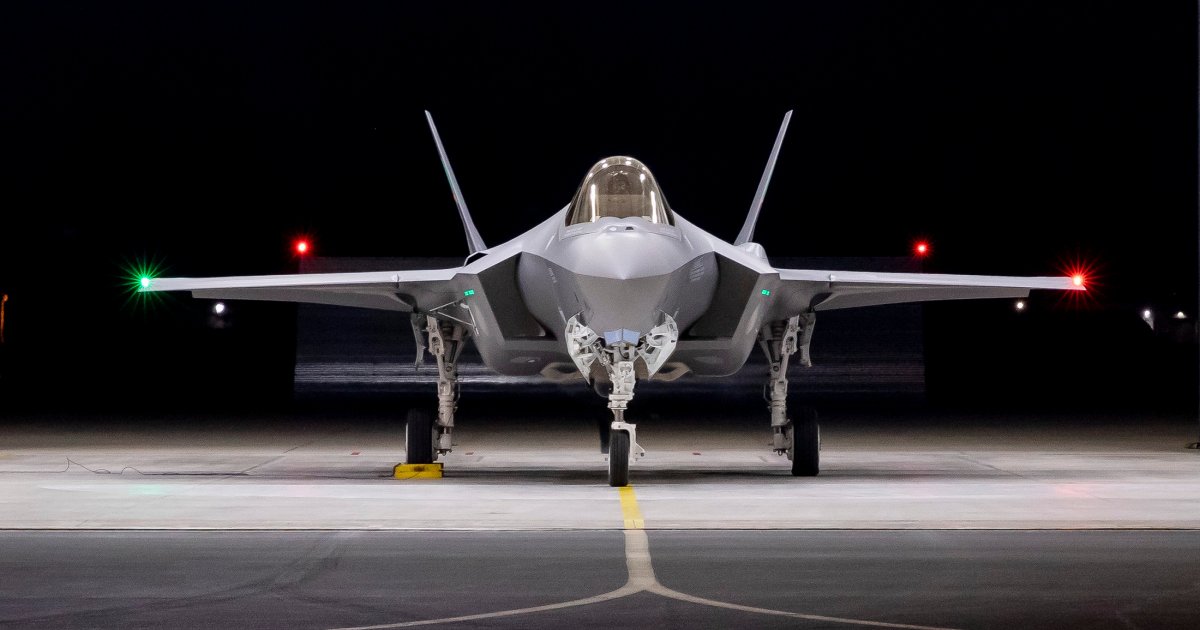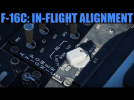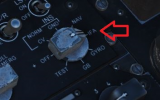Olympiakasarmi
Kenraali
Saksa saattaa hyvinkin todeta, että F-35:tä voidaan tarvita välivaiheen koneeksi ennen FCAS:n käyttöönottoa.Saksassa uusi hallitus ja Tornadon korvaajaksi useita mahdollisuuksia
Follow along with the video below to see how to install our site as a web app on your home screen.
Note: This feature may not be available in some browsers.
Saksa saattaa hyvinkin todeta, että F-35:tä voidaan tarvita välivaiheen koneeksi ennen FCAS:n käyttöönottoa.Saksassa uusi hallitus ja Tornadon korvaajaksi useita mahdollisuuksia

Saksa saattaa hyvinkin todeta, että F-35:tä voidaan tarvita välivaiheen koneeksi ennen FCAS:n käyttöönottoa.

Norway's defender in the clouds
What happens if an unknown aircraft approaches Norwegian airspace?
Updated: Jan 10, 2022 12:57 PM
The Armed Forces continuously monitors Norwegian airspace and adjacent areas. If an unknown aircraft approaches our airspace, the Armed Forces will move out with two F-35s. The fighter planes find the unknown planes, and identify and document them. The F-35 will also prevent aircraft from entering Norwegian airspace illegally.
We call this emergency mission QRA - Quick Reaction Alert. We are solving the mission on behalf of NATO and means that Norway has two fighter jets ready to move out, or scramble, at any given time. When the alarm goes off, the planes are in the air within 15 minutes.
Below you can see a QRA assignment step by step. At the bottom of the article you can also read more about what and who the unknown aircraft are.
1. Discovery
The Armed Forces monitors Norway's airspace around the clock, 365 days a year. The monitoring takes place from the Air Force's control and warning center CRC Sørreisa. Their task is to keep track of air traffic in and near Norwegian airspace.
CRC Sørreisa uses data from various radars located from Vardø in the north to Skykula in the south. When they discover an aircraft that does not use its transponder, is in radio contact with civil air traffic control or has an activated flight plan, they report it to NATO's CAOC (Combined Air Operations Center) in Uedem in Germany.
2. Order
The commander of the operating room at CAOC in Germany decides whether or not to order a QRA.
Departure
It does not take many minutes from the QRA is ordered, until the technicians have prepared the planes and the pilots are ready to take off. As the F-35 is in the air on its way to the unknown aircraft, it has been a maximum of 15 minutes since the alarm went off.
4. Identification
On their way to the unknown aircraft, the F-35 pilots talk to personnel from CRC Sørreisa. CRC personnel use radio communications, links and radars to plan how the F-35 can best maneuver closer to the unknown aircraft.
When the F-35 pilots are so close that they themselves see the unknown aircraft, they take over the navigation. One F-35 positions itself slightly above, in front of and to the left of the unknown aircraft, the other aircraft lies a little further behind to keep track.
5. Security
It can look dangerous to fly so close to other planes. But Norwegian fighter pilots are very well trained, and they must follow comprehensive rules and procedures for such identifications.
Among other things, they must keep a certain distance from the aircraft so that they do not provoke a dangerous situation. At the same time, they must have visual contact with the commander of the other aircraft.
6. Escorts
If required, QRA aircraft can escort the aircraft to designated airports, or out of NATO territory. In the event of a hijacking of a civilian aircraft, it will usually be civil authorities, such as the police, who handle the incident. In such a case, NATO will then transfer the authority over the QRA aircraft to the Norwegian civilian authorities.
7. Return
After the situation is resolved, the F-35 returns to Evenes.
8. Report
After the operation is completed, the Air Force sends the report back to the CAOC. In this way, NATO can have a continuous overview of the QRA missions. The reports are archived for use in statistics and as information for later.
What is an "unknown aircraft"?
By an unknown aircraft we mean an aircraft, helicopter or other aircraft that flies with a bred transponder or transmitter. Norwegian aircraft radars will detect these aircraft, but civilian air traffic controllers and the Armed Forces' control and warning center will not know exactly what kind of aircraft these are, or who is flying them. For Norway, such unknown aircraft are mainly Russian military aircraft on various aircraft and training missions along Norwegian airspace.
It is important to emphasize that there is nothing dramatic about such Russian flights, and Russia is allowed to fly such missions. Nevertheless, it is important for Norway and NATO to find and identify the aircraft. We do this to have an overview of frequency and flight patterns, but also to show that we have control and monitor air traffic.
Every year, the Armed Forces launches around 50 such QRA missions (scrambles), and we identify around 70 aircraft a year.
Cut-off
We use the term "interception" when an F-35 with force must prevent an unknown aircraft from entering Norwegian airspace illegally. A cut-off may, for example, involve offensive aircraft maneuvers to force the unknown aircraft to change course away from Norwegian airspace.
Such cuts are very unusual in Norway, and they usually occur every few years.
QRA statistics
Scrambles and identifications over the last five years
Until and including 2021, it was the F-16 that solved the QRA from Bodø. From 2022, the F-35 has taken over the assignment from Evenes.
- 2021: 34 scrambles with 58 identified aircraft
- 2020: 50 scrambles with 96 identified aircraft
- 2019: 38 scrambles with 83 identified aircraft
- 2018: 57 scrambles with 100 identified aircraft
- 2017: 37 scrambles with 59 identified aircraft
The number of identified aircraft does not include all unknown aircraft close to Norwegian airspace. For example, the Armed Forces' radars can detect a group of six unknown aircraft, but we can choose to find and identify only two of them. The most important thing about QRA is not necessarily to identify all unknown aircraft, but to have an overview of operating patterns and frequency of such flights.

15 min on kyllä aika pitkä aika. Siinä taittuu parisataa km helposti.Norskien hieno kuvaus mitä on QRA.
15 min on kyllä aika pitkä aika. Siinä taittuu parisataa km helposti.



DK oli erittäin nopea starttaamaan lennolleKyllä Suomessakin olen kuullut tarinoita kuinka MIG lähti rullaamaan muutama minuutti hälytyksestä. Siinä ei ilmeisesti tarvitse odottaa minkään järjestelmän käynnistymistä tai lämpiämistä ennen rullaukseen lähtöä.
Kyllä Suomessakin olen kuullut tarinoita kuinka MIG lähti rullaamaan muutama minuutti hälytyksestä. Siinä ei ilmeisesti tarvitse odottaa minkään järjestelmän käynnistymistä tai lämpiämistä ennen rullaukseen lähtöä.
Yksinykykoneita4.-sukupolven koneita aina hidastava asia on inertianavigoinnin tasaus, jota ei pysty rullauksen aikana tekemään. Koneista saattaa löytyä myös muita järjestelmiä, joiden (lämpiäminen ja) itsetestaus pitää tehdä ennen rullaukseen lähtöä. Jos HN on maavirta kytkettynä ja järjestelmät päällä ennen käynnistystä, rullaukseen lähtö käynnistyksen jälkeen on yhtä nopeaa kuin MIG:illä.
DK oli erittäin nopea starttaamaan lennolle



AC-130 Gunships Are Finally Getting A New 105mm Howitzer
The AC-130's biggest gun is getting a makeover to make it more capable and reliable than its 1960s-era predecessor.www.thedrive.com

Näitä ois muutama kiva olla kans
